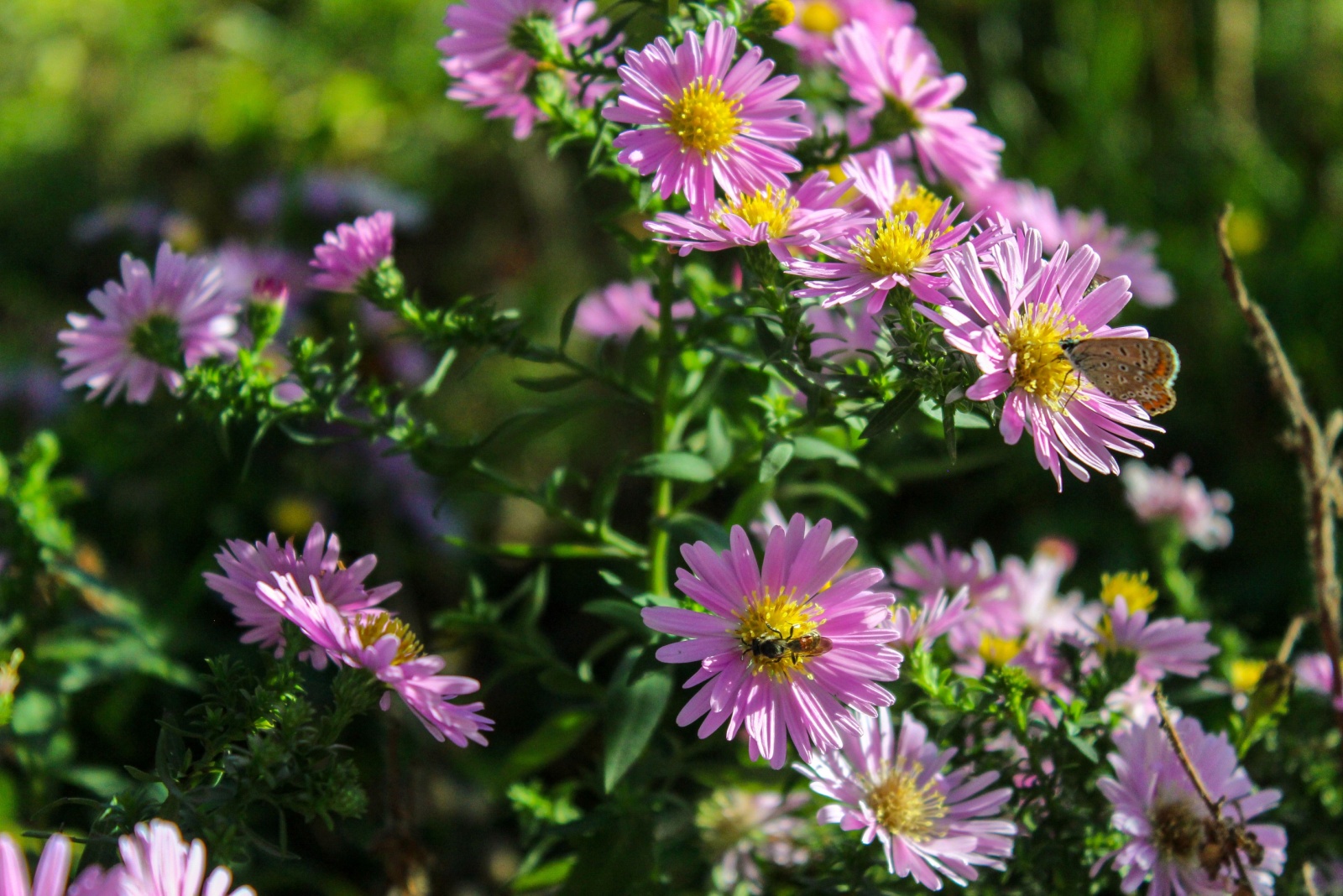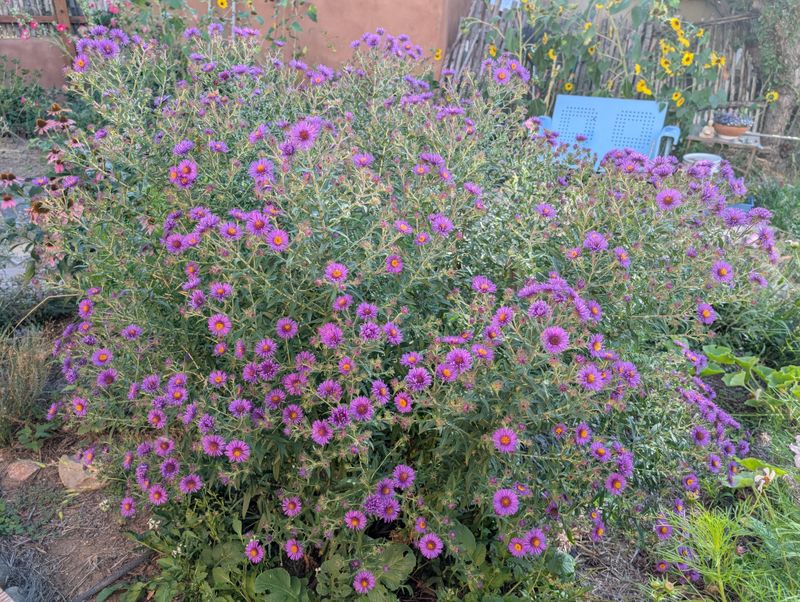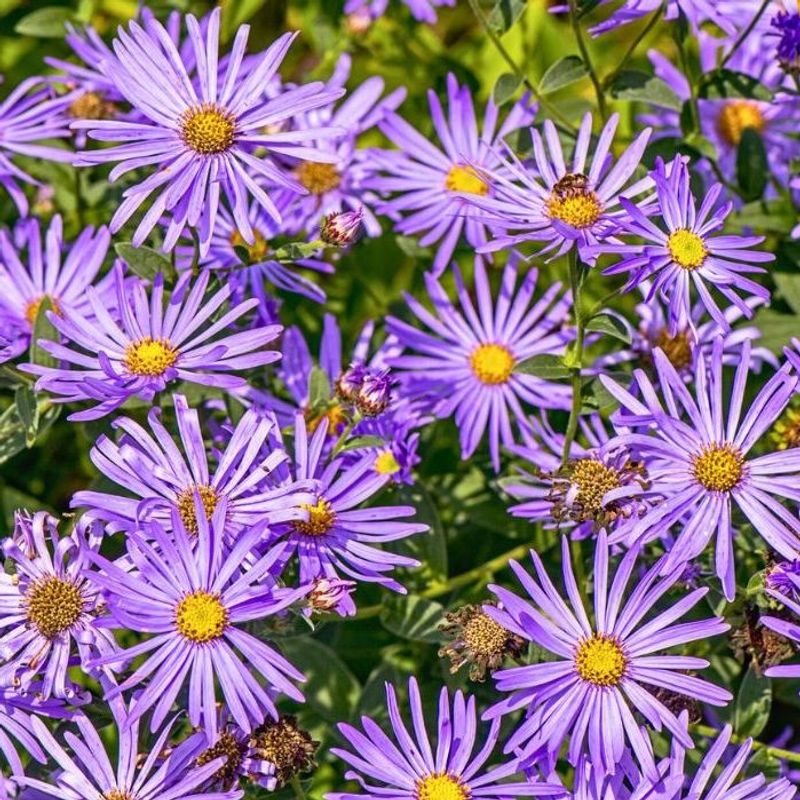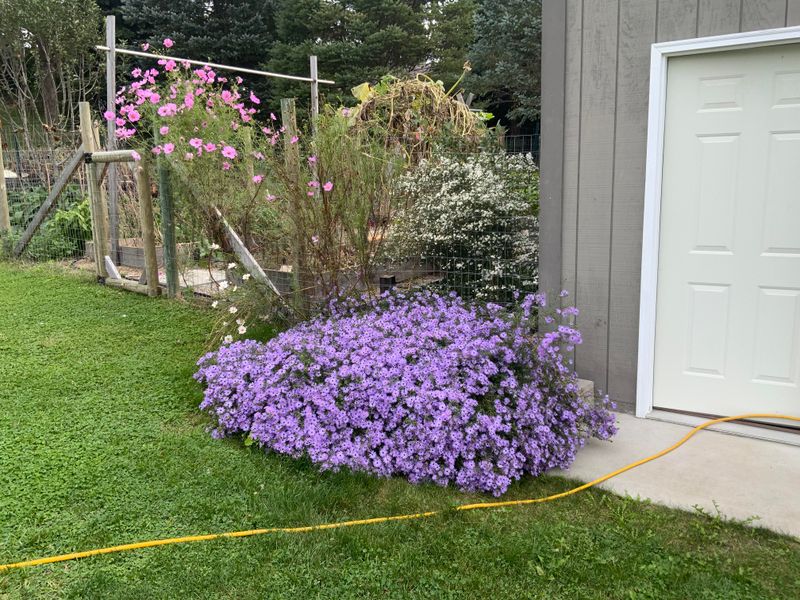Fall asters bring gorgeous purple, pink, and white blooms to North Carolina gardens right when most flowers are fading away. Growing these beautiful plants successfully means knowing how to keep them healthy without letting them take over your entire flower bed.
With the right care techniques, you can enjoy stunning asters every autumn while maintaining a balanced, beautiful garden space.
1. Choose Compact Varieties For Better Control
Selecting shorter aster varieties makes a huge difference in keeping your garden beds organized and manageable. Dwarf cultivars like ‘Purple Dome’ or ‘Wood’s Pink’ typically grow only 12-18 inches tall instead of sprawling to four feet.
North Carolina gardeners love these compact types because they don’t flop over or crowd out neighboring plants. Shorter asters also resist wind damage better during fall storms.
When shopping at your local nursery, always check the plant tag for mature height information before buying.
2. Pinch Back Stems In Early Summer
Pinching is a simple trick that prevents asters from becoming tall and leggy by late summer. Around late May or early June, use your fingers to snap off the top two inches of each stem.
This encourages the plant to grow bushier rather than taller, creating more flower buds in the process. You can pinch again in early July if needed, but stop by mid-July to ensure autumn blooms.
Regular pinching keeps asters compact and prevents them from shading out smaller plants nearby.
3. Plant In Full Sun For Sturdy Growth
Asters absolutely thrive when they receive at least six hours of direct sunlight daily. Full sun exposure creates stronger, sturdier stems that stand upright without staking or support.
Shade causes asters to stretch toward light, making them floppy and prone to falling over onto other plants. North Carolina’s warm climate provides excellent sun conditions throughout the growing season.
Position asters in the sunniest spots of your garden, away from trees or structures that cast afternoon shadows.
4. Divide Clumps Every Two To Three Years
Asters spread through underground roots, forming bigger clumps each year that can overtake flower beds if left unchecked. Dividing plants every few springs keeps them healthy and prevents aggressive spreading.
Dig up the entire clump in early spring, then use a sharp spade to cut it into smaller sections. Replant one section in the original spot and share or relocate the others.
Division also rejuvenates older plants, encouraging better blooming and preventing the center from dying out.
5. Install Root Barriers For Aggressive Spreaders
Some aster varieties spread more aggressively than others through underground runners that pop up everywhere. Installing root barriers creates physical boundaries that keep roots contained within designated areas.
Bury plastic edging or metal barriers at least 8-10 inches deep around your aster planting zone. Check annually to ensure roots haven’t jumped over the barrier.
Root barriers work especially well for native species like New England asters that naturally colonize large areas in the wild.
6. Space Plants Properly At Planting Time
Proper spacing prevents overcrowding problems before they start by giving each aster room to grow without encroaching on neighbors. Plant most varieties 18-24 inches apart, measuring from center to center.
Adequate spacing also improves air circulation, reducing fungal diseases common in North Carolina’s humid climate. While young plants look sparse initially, they’ll fill in beautifully by fall.
Resist the temptation to squeeze in extra plants, even when garden centers offer tempting sales on multiple pots.
7. Mulch Heavily To Suppress Volunteer Seedlings
Asters drop seeds that sprout everywhere the following spring, creating unwanted volunteers throughout your flower beds. Applying 2-3 inches of mulch blocks light from reaching fallen seeds, preventing most from germinating.
Organic mulches like shredded bark or pine straw work perfectly in North Carolina gardens. Mulch also conserves moisture and moderates soil temperature during hot summers.
Refresh mulch each spring and pull any seedlings that manage to break through before they establish deep roots.








